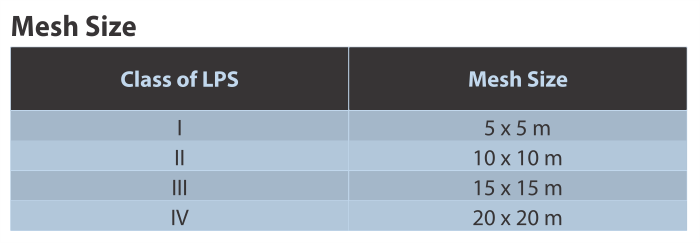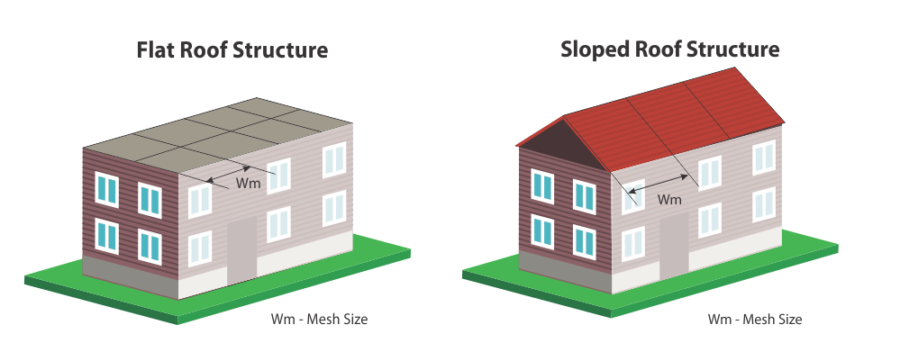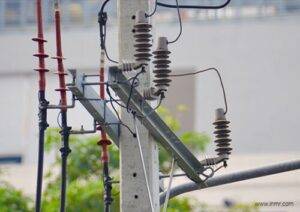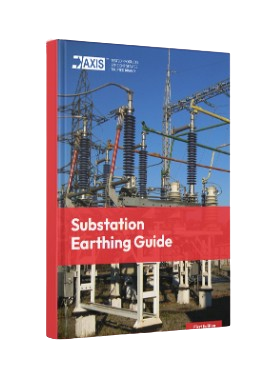The mesh method is one of the three routes for lightning protection system design defined by IEC 62305, the international standard for lightning protection design. After the first step of determining the class of lightning protection decided by the Risk Assessment, the lightning protection system design can be done using the Rolling Sphere, Protection Angle method, or the Mesh method. The system design will provide information such as the location of the lightning arresters, down conductors, earth electrodes, other equipment, and the complete Bill of Material.
What is Mesh Method?
The mesh method is a flexible design tool because it is not dependent on the height of the structure. However, it requires flat surfaces, it cannot be used on curved surfaces. However, the surface does not necessarily have to be horizontal – it can also be used on vertical surfaces to protect against flashes. In the mesh method, a mesh of conductors should be placed on the structure and the separation distance of the conductors is based upon the class of protection determined during the risk assessment. The maximum mesh size should be in accordance with the table below.

The mesh method also requires that:
1. Air termination is placed on:
- Roof edges
- Roof overhangs, and
- Roof ridge lines when the pitch is in excess of 1/10 (5.7°)
2. No metal structure can protrude outside the volume protected by this method.
3. The network is constructed such that at least two separate paths exist to the earth electrodes and that these conductors follow the most direct path to the ground.
Research has indicated that the corners and edges of roofs are most susceptible to damage due to lightning. Therefore, designers and installers should place the conductors as close to the edge of the roof as possible.

IEC 62305 allows for the use of conductors under the roof of a structure. Thus, the natural components of a structure can be used as part of the mesh grid, or even the whole grid. These components may be the rebar structure underneath the roof or dedicated lightning protection conductors, but they must be connected to the air termination rods that are mounted above the roof.
For structures, with a protruding metallic structure, the Protective Angle Method is generally used as a supplement to the Mesh Method.
Software to aid Lightning Protection Design
As you have read above, assessing, designing and finally constructing a safe and reliable Lightning Protection System is not an easy task. It requires many measurements, calculations, and experience to execute perfectly. In addition to the products and 25 years of experience that Axis offers, we also offer a software suite that will help simplify all your lightning protection calculations so that you can put your head towards providing the best service for your clients. Axis can also help you with the entire process from Step 1 of Risk Assessment, to Lightning Protection System Design and all the way through the supply of internationally approved products. Our engineers will be on the field with you to make sure that they provide the most precise protection for your structure!
For more information on our Software Solutions or our Risk Assessment and System Design, please contact us!
This article is part of our series of articles on Lightning Protection, Surge Protection & Earthing, you can read more with the following links:
Surge Protection Devices (SPD)
Lightning Protection Zones and their Application to SPD Selection
How does a Lightning Arrester work?
For more information, please contact us at axis-india.com/contact-us/








